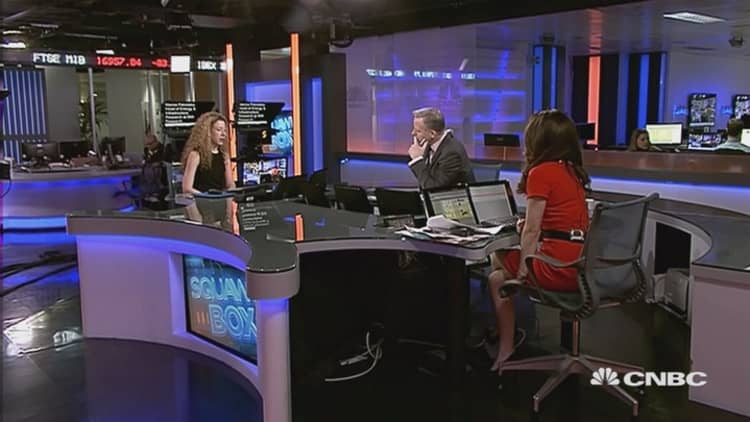


U.S.oil prices rose near 8 percent on Wednesday, after an unexpected drop in crude inventories.
Crude inventories fell by 3.3 million barrels in the week to Feb. 12 to 499.1 million, compared with analysts' expectations for an increase of 3.9 million barrels. Crude stocks at the Cushing, Oklahoma, delivery hub dipped by 175,000 barrels, API said.
Refinery crude runs fell by 27,000 barrels per day, API data showed.
Oil futures have staged a rebound from their lowest levels in a dozen years, bouncing after Iran voiced support for a move led by Russia and Saudi Arabia to freeze production in an oversupplied market.
Iranian Oil Minister Bijan Zanganeh met counterparts from Venezuela, Iraq and Qatar in Tehran for over two hours on Wednesday, saying the proposed production "ceiling" should be the first step toward stabilizing the market.
Zanganeh, quoted by Tehran's Shana news agency, did not say explicitly say that Iran will keep its own output at January's levels, in line with the proposal that major producers including Russia and Saudi Arabia restrict output.
But the tacit endorsement from Iran helped pushed global crude benchmark Brent up more than $2 a barrel. Tehran has been the main obstacle to the first joint OPEC and non-OPEC deal in 15 years, after its pledge to recapture market share lost during years of sanctions.
Brent crude was up $2.70, or 8.39 percent, at $34.88 a barrel, having risen as high as $34.76.
Traders also cited options expiry in U.S. crude for the rebound. The March contract settled 5.58 percent higher, or $1.62, at $30.66 a barrel, and last traded up 7.95 percent, or $2.31, at $31.35 a barrel.
"I'm pricing between $35 and $45 for Brent by summer, as we still have a daily surplus of up to 1.7 million barrels of oil to contend with," said Phil Davis, an independent crude trader at PSW Investments.
"But I don't see the panic move down below $30 happening again," Davis said. "That's just untenable."
Crude prices have fallen from highs above $100 a barrel with little resistance for most of the past 20 months, thanks to near-record output by the Organization of the Petroleum Exporting Countries and other major drillers such as Russia.
But after hitting 2003 lows beneath $30 last week, prices reversed course, surging about 12 percent on Friday alone after the United Arab Emirates said OPEC was ready to cooperate in bringing production down.
Under the proposal to freeze production, major producers including Russia and Saudi Arabia would restrict output at January levels.
Standard & Poor's cut its rating on the Kingdom of Saudi Arabia's long-term foreign and local currency sovereign credit to 'A minus/A-2' from 'A plus/A-1,' citing a fall in oil prices since the rating agency's last review of the country in October.
An Iranian official earlier said the fourth largest producer in OPEC would continue increasing its output until it reached levels achieved before the 2012 trade sanctions.
The pact to freeze output will make little difference to this year's overall supply-demand balance in oil, according to some analysts.
"The market needs a cut, not a production freeze," PVM analyst David Hufton said.
Investors are also eyeing U.S. oil inventory data from industry group the American Petroleum Institute later on Wednesday and official government figures on Thursday for further direction on prices, with a poll of analysts suggesting a gain of 3.9 million barrels in crude oil stocks last week.



